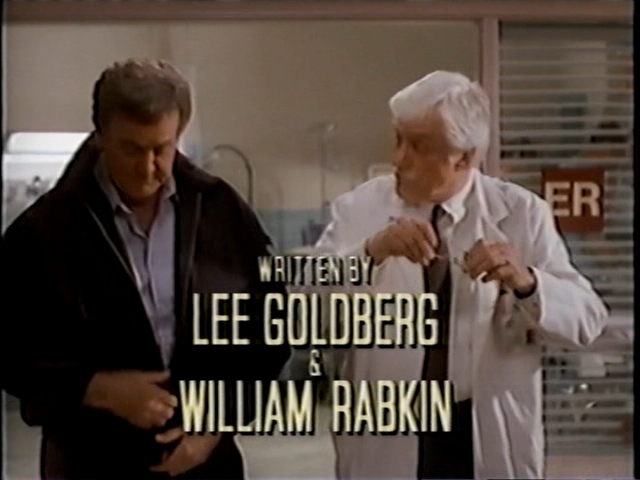 When you sit down to write a mystery novel, there are no limitations on where your characters can go and what they can do. Your detective hero can appear on every single page. He can spend all the time he wants outdoors, even at night, and can talk with as many people as he likes. Those may not seem like amazing creative liberties to you, but to someone writing in television, they are amazing freedoms.
When you sit down to write a mystery novel, there are no limitations on where your characters can go and what they can do. Your detective hero can appear on every single page. He can spend all the time he wants outdoors, even at night, and can talk with as many people as he likes. Those may not seem like amazing creative liberties to you, but to someone writing in television, they are amazing freedoms.
Before a TV writer even begins to think about his story, he has to consider a number of factors that have nothing to do with telling a good mystery or creating memorable characters.
For one thing, there’s the budget and the shooting schedule. Whatever story you come up with has be shot in X many days for X amount of dollars. In the case of Diagnosis Murder, a show I wrote and produced for several years, it was seven days and $1.2 million dollars. In TV terms, it was a cheap show shot very fast.
To make that schedule, you are limited to the number of days your characters can be “on location” as opposed to being on the “standing sets,” the regular interiors used in each episode. On Diagnosis Murder, it was four days “in” and three days “out.” Within that equation, there are still more limitations – how many new sets can be built, how many locations you can visit and how many scenes can be shot at night.
Depending on the show’s budget, you are also limited to X number of guest stars and X number of smaller “speaking parts” per episode. So before you even begin plotting, you know that you can only have, for example, four major characters and three smaller roles (like waiters, secretaries, etc.). Ever wonder why a traditional whodunit on TV is usually a murder and three-to-four suspects? Now you know.
Then there’s the work schedule of your regular cast to consider. On Diagnosis Murder, Dick Van Dyke only worked three consecutive days a week and he wouldn’t visit any location more than thirty miles from his home. Co-star Victoria Rowell split her time with the soap opera Young and the Restless, and often wasn’t available to shoot until after lunch.
On top of all that, your story has to be told in four acts, with a major twist or revelation before each commercial break, and unfold over 44 minutes of airtime.
It’s astonishing, given all those restrictions, that there are so many complex, entertaining, and fun mysteries on television.
Those limitations become so ingrained to a TV writer/producer, that it become second-nature. You instinctively know the moment you’re pitched a particular story if it can be told within the budgetary and scheduling framework of your show. It becomes so ingrained, in fact, that it’s almost impossible to let go, even when you have the chance.
I’m writing a series of original Diagnosis Murder novels for NAL. I am no longer bound by the creative restrictions of the show. I don’t have to worry about sticking to our “standing sets,” Dick Van Dyke’s work schedule, or the number of places the characters visit.. Yet I’m finding it almost impossible to let go. After writing and/or producing 100 episodes of the show, it’s the way I think of a Diagnosis Murder story.
And if you watched the show, it’s the way you think of a Diagnosis Murder story, too –whether you realize it or not. You may not know the reasons why a story is told the way its told, but the complex formula behind the story-telling becomes the natural rhythm and feel of the show. When that rhythm changes, it’s jarring.
If you watch your favorite TV series carefully now, and pay close attention to the number of guest stars, scenes that take place on the “regular sets,” and how often scenes take place outdoors at night, and you might be able to get a pretty good idea of the production limitations confronting that show’s writers every week.
And if you read my Diagnosis Murder novels, feel free to put the book down every fifteen minutes or so for a commercial break.

It’s really fascinating to read your experiences and what you have to say about television shows and Hollywood and how it all gets done.
It may not be something you want to do on a blog or you’ve maybe done it elsewhere, but I just got to wondering if you have any Dick Van Dyke stories? Not dirt, just anecdotes. But, like I say, maybe you wouldn’t think that appropriate for your blog.
I have many — I’ll try to post one or two this week.
Yes, it is engrained big time. My only complaint about the second book was that there wasn’t enough Jesse and Amanda. And that was with a huge story with lots of twists.
But with a book, don’t you think commercials would happen a little more often then 15 minutes?
ACK! Make that a little less often then 15 minutes. I don’t see a book as being a two hour episode, so I would probably break less then that. But maybe I’m just a slow reader.